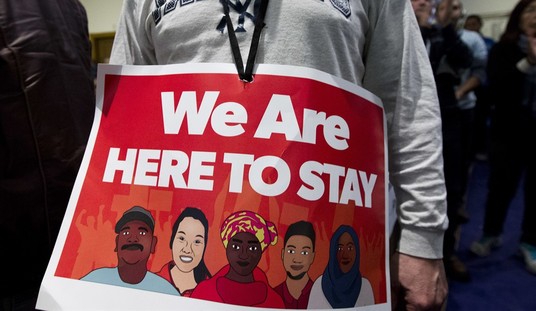Update: Stocks are up big on today’s employment report. In fact, Americans worked less in April than in March: multiply the increase in payrolls by the decline in hours worked, and the total number of working hours fell. Almost all the increase in employment was in retail, hospitality and temp agencies, and probably reflects employers spreading the work around a larger number of workers working fewer hours in order to save on health benefits.
Just after Obama’s re-election we heard Republican leaders explain that Obama had just gotten lucky — the economy was in the recovery phase of a normal business cycle, and Obama caught the right wave. As the stock market rallied through the first four months of 2013 and regained its old peak, the story seemed credible — until a couple of weeks ago, that is.
We’ve had one depressing economic report after another. Employment is barely growing, according to the ADP survey, which showed just 119,000 new jobs created in April and 118,000 in May. The April purchasing managers’ index for manufacturing fell sharply from 54.6 to 52.1 (50 is dead in the water).
The Shadow Government Statistics website calculates the true unemployment rate — the proportion of the working-age population that can work but doesn’t — at 23%. That includes so-called “long-term discouraged workers” not included in the labor force. Even the government’s own broad measure of unemployment still stands at almost 15%, twice the pre-crisis level.
On a GDP basis, the economy grew at an 0.8% rate in the fourth quarter of 2012 and at a 2.5% in the first quarter. That’s just 1.5% without counting inventories. Investment in industrial equipment actually fell during the quarter. It’s an economy that is flying barely above stall speed.
No, Obama didn’t win re-election because the vote happened to occur at the cusp of a normal business cycle recovery. The economy really is that bad. So is Obama. Sadly, so was the Republican ticket.

Why is the economy so bad? According to the usual chatter, it’s because payroll taxes went up and took $140 billion out of personal income during the first quarter. But another big category of personal income — receipts on assets — fell by $125 billion, a hit to personal income almost as big as payroll taxes. And almost all of that was due to lower dividends. It turns out that companies are paying a lot less cash out to stockholders. The S&P 500 dividend per share fell from about $9 to about $8 during the first quarter, and the GDP data indicate that drop occurred throughout the corporate world.
Another sign of economic weakness is that the sales of S&P 500 companies fell by 5% during the quarter. Profits per share, though, were higher. How is the stock market managing to levitate above a busted economy, where the sales growth of top companies can’t even keep up with nominal GDP? Part of the reason is leverage.
The weighted average Return on Investment for the S&P 500 is slightly over 11%, and the cost of medium-term BBB borrowing (the average rating for the S&P 500) stands at just over 3%, thanks to the Fed’s quantitative easing program. In sectors where cash flows are annuity-like, e.g., consumers and utilities, it makes sense for companies to issue record amounts of bonds and buy back their own shares. That helps explain why earnings can continue to grow, at least modestly, even though revenues appear to have fallen by nearly 1% during the first quarter.
Here’s a simple example. Suppose you and a partner jointly invested $100,000 in a business that earns $10,000 a year. You each have $50,000 in capital, and take out $5,000, for a return of 10% a year. If Ben Bernanke will lend you money at 3% to buy out your partner, you will now make $10,000 on your capital of $5,000, minus the interest expense (3% of $50,000, or $1,500). You earn $8,500 net on a $50,000 investment, or a 17% rate of return.
You would do that trade all day if you could. Thanks to the Fed, large U.S. companies can, and do. The cost of BBB-rated bonds (the average credit rating of the S&P 500) is at an all-time low of 3%. And the average return on investment for the S&P 500 is around 11%. The actual numbers are not much different from the example I just gave.
There’s a catch, of course. If you take on debt to buy income from a business, you could get into trouble if business profits drop. That’s why companies play this leverage game in sectors that have reliable income streams, for example consumer staples. Below, we see the performance of the Consumer Staples ETF (XLP) against the Industrials (XLI) and Technology ETF’s. Stable sectors with annuity-like cash flows — consumer, utilities, and health care — soared during the first quarter, while riskier sectors languished.
There’s another catch. It’s so easy to make money by levering up corporate balance sheets that there’s no incentive to invest in new plant and equipment. Bernanke’s cheap money policy was supposed to reduce returns to cash and bonds and force investors to take risks in real assets. It hasn’t worked out that way. It’s only encouraged investors to apply more leverage to existing assets. No investment, no jobs. That’s part of the reason employment refuses to recover. Another is Obamacare, which drastically increases the cost of new hiring for small and medium-sized businesses.
The rally is making Americans richer on paper but poorer in terms of income. Suppose you owned a portfolio of BBB-rated corporate bonds yielding 4.4% in June 2011, and sold it to buy stocks. Your stock portfolio would have gained 20% since then. If you sold the portfolio to buy bonds at the present yield of 3.2%, you would be able to buy 20% more bonds, so your portfolio would yield 1.2 X 3.2%, or 3.84% — less than you received before. In terms of income, you lost money by selling bonds to buy stocks back in June 2011. In fact, you would have lost on a current-income basis if you sold bonds to buy stocks on almost any day during the past five years.
Fed easing hasn’t brought about recovery. Government spending won’t bring about recovery. Supply-side incentives to investors (lower corporate and capital gains taxes in particular) and regulatory rollback, starting with Obamacare, are the only way out of this morass.










Join the conversation as a VIP Member